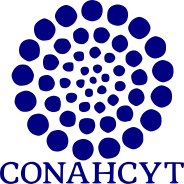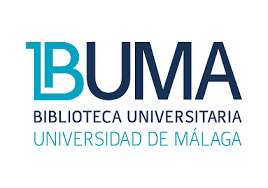Semillas de rabanitos (Raphanus sativus L): observaciones de su morfología bajo microscopía electrónica, germinación y utilidad para estudios de fitotoxicidad.
Palabras clave:
rabanitos, test de germinación, ecotoxicología, histología, forma de las semillasResumen
Raphanus sativus es una planta importante en la industria de las semillas de todo el mundo especialmente en Asia. El conocimiento actual de su genoma convierte a este organismo en un buen modelo para análisis científicos. R. sativus es una planta dicotiledónea que se cultiva en todo el mundo. Pertenece a la misma familia que Arabidopsis thaliana: Brassicaceae. Se conocen muchos aspectos de su biología y se considera una especie apta para estudios de toxicidad y acumulación de sustancias químicas en sus tallos, hojas y flores. El objetivo de este trabajo fue analizar la morfología y ciertas características de la germinación de las semillas de R. sativus. Se observó que el color de la capa seminal varía entre los marrones claros, la forma es ovoide e irregular y mide aproximadamente tres (3) mm de diámetro. Describimos las características morfológicas analizadas mediante Microscopía Electrónica de Barrido (MEB) e histología de las semillas. Además, también se describe brevemente la germinación observada de las semillas de R. sativus. Éstas son apropiadas para ser utilizadas en la evaluación de los efectos tóxicos de ciertos compuestos químicos especialmente sobre el proceso de germinación ya que la elongación de la radícula ha mostrado una gran heterogeneidad.
Palabras clave: Raphanus sativus, germinación, morfología, semillas, MEB.
Referencias
Baskin, J. M., & Baskin, C.C. (2004). A Classification system for seed dormancy. Seed Science Research , 14: 1-16.
Baskin, C. C., & Baskin, J. M. (2005). Underdeveloped embryos in dwarf seeds and implications for assignment to dormancy class. Seed Science Research , 15, 357–360.
Bewley, J. D. (1997). Seed Germination and Dormancy. The Plant Cell, (American Society of Plant Physiologists). Vol. 9, 1055-1066.
Bewley, J. D., & Black, M. (1994). Seeds - Physiology of Development and Germination. Springer Science & Business Media. New York: Plenum Press. 445pp.
Carpita, N., Sabularse, D., Montezinos, D., & Delmer, D. P. (1979). Determination of the Pore Size of Cell Walls of Living Plant Cells. Science , 205, 1144 - 1147.
Copeland, L. O., & Mc Donald, M. B. (2001). Seed Germination. Chap. 5 In: Principles of Seed Science and Technology. Boston, MA: Springer.pg.: 59-100
Cheng, F., Liang, J., Cai, C., Cai, X., Wu, J., & Wang, X. (2017). Genome sequencing supports a multi-vertex model for Brassiceae species. Curr Opin Plant Biol , 36, 79-87.
Choudhary, S. P., Oral, H. V., Bhardwaj, R., Yu, J.-Q., & Tran, L. S. (2012). Interaction of Brassinosteroids and Polyamines Enhances Copper Stress Tolerance in Raphanus sativus. Journal of Experimental Botany , 63 (15), 5659-75.
Di Santo, M. E., Cardinali, F. J., & Thevenon, M. A. (2012). Estudio anatómico y distribución de las reservas proteicas y lipídicas en semillas de diferentes tamaños de Cuphea glutinosa (Lythraceae). Boletín de la Sociedad Argentina de Botánica , 47 (3-4), 341-350.
Don, R., Kahlert, B., & McLaren, G. (2013). ISTA Handbook on Seedling Evaluation. Third Edition with amendments. Bassersdorf: International Seed Testing Association (ISTA), Germination Committee.-.
Gül, E. O., & Levent, A. (2008). Determining the best sprouting conditions for germination of radish (Raphanus sativus) seeds consumed as vegetables. Journal of food, agriculture & Environment , 6 (1), 123-127.
Hasterok, R., Wolny, E., Hosiawa, M., Kowalczyk, M., Kulak-Ksiazczyk, S., Ksiazczyk, T., Heneen, W.K.; Maluszynka, J. (2006). Comparative Analysis of rDNA Distribution in Chromosomes of Various Species of Brassicaceae. Annals of Botany , 97 (2), 205-216.
Hladun, K. R., Parker, D. R., & Trumble, J. T. (2015). Cadmium, Copper, and Lead Accumulation and Bioconcentration in the Vegetative and Reproductive Organs of Raphanus sativus: Implications for Plant Performance and Pollination. Journal of Chemical Ecology , 41 (4), 386-395.
Huff, A. K., & Ross, C. W. (1975). Promotion of Radish Cotyledon Enlargement and Reducing Sugar Content by Zeatin and Red Light1. Plant Physiol (56), 429-433.
Husen, A., & Siddiqi, K. S. (2014). Plants and microbes assisted selenium nanoparticles: characterization and application. Journal of Nanobiotechnology (12): 28.
Jaykaran. (2010). “Mean ± SEM” or “Mean (SD)”? Indian Journal of Pharmacology , 42 (5), 329.
Kasem, W. T., Ghareeb, A., & Marwa, E. (2011). Seed Morphology and Seed Coat Sculpturing of 32 Taxa of Family Brassicaceae. Journal of American Science , 7 (2): 166-178.
Kitashiba, H., Li, F., Hirakawa, H., Kawanabe, T., Zou, Z., Hasegawa, Y., Tonosaki, K., Shirasawa, S., Fukushima, A., Yokoi, S., Takahata, Y., Kakizaki, T., Ishida, M., Okamoto, S., Sakamoto, K., Shirasawa, K., Tabata, S., & Nishio, T. (2014). Draft sequences of the radish (Raphanus sativus L.) genome. DNA research : an international journal for rapid publication of reports on genes and genomes, 21(5), 481–490
Kostka-Rick, R., & Manning, W. J. (1993). Radish (Raphanus sativus L.): A model for studying plant responses to air pollutants and other environmental stresses. Environmental Pollution , 82 (2), 107-138.
Lane, S. D., & Martín, E. S. (1982). An Ultrastructural Examination of Lead Localisation in Germinating Seeds of Raphanus sativus. Z. Pjlanzenphysiol. Bd. , 107 (1), 33-40.
Mun, J. H., Chung, H., Chung, W. H., Oh, M., Jeong, Y. M., Kim, N., Ahn, B. O., Park, B. S., Park, S., Lim, K. B., Hwang, Y. J., & Yu, H. J. (2015). Construction of a reference genetic map of Raphanus sativus based on genotyping by whole-genome resequencing. Theoretical and applied genetics (TAG). 128(2), 259–272.
Nie, S., Li, C., Xu, L., Wang, Y., Huang, D., Muleke, E. M., Sun, X., Xie, Y., & Liu, L. (2016). De novo transcriptome analysis in radish (Raphanus sativus L.) and identification of critical genes involved in bolting and flowering. BMC genomics (17), 389.
Pirdosti, K.M., Movahedi, Z., & Rostami, M. (2018). Effect of cadmium stress on morpho-physiological traits in garden cress and radish in an aeroponic system. Iranian Journal of Plant Physiology , 9 (1), 2591-99.
Rico, C. M., Majumdar, S., Duarte-Gardea, M., Peralta-Videa, J. R., & Gardea-Torresdey, J. L. (2011). Interaction of nanoparticles with edible plants and their possible implications in the food chain. Journal of Agricultural and Food Chemistry , 59 (8), 3485-98.
Salazar Mercado, S.A., Quintero Caleño, J. D., & Urbano, B. (2019). Implementación de la prueba de tetrazolio en las semillas de Raphanus sativus L. Revista Facultad de Ciencias Básicas , 15 (2), 7-15.
Schopfer, P., Plachy, C. (1993). Photoinhibition of radish (Raphanus sativus L) seed germination: control of growth potential by cell-wall yielding in the embryo. Plant, Cell and Environment 16, 223-229.
Schopfer, P., Plachy, C., & Frahry, G. (2001). Release of Reactive Oxygen Intermediates (Superoxide Radicals, Hydrogen Peroxide, and Hydroxyl Radicals) and Peroxidase in Germinating Radish Seeds Controlled by Light, Gibberellin and Abscisic Acid. Plant Physiology , 125 (4), 1591-1602.
Sethy, S. K., Ghosh, S. (2013). Effect of heavy metals on germination of seeds. J Nat Sci Biol Med. 4 (2), 272-275.
Siddiqi, K. S., Husen, A. (2017). Plant Response to Engineered Metal Oxide Nanoparticles. Nanoscale Research Letters , 12, 92.
Stanton, M. (1984). Seed variation in Wild Radish: Effect of Seed Size on Components of Seedling and adult Fitness. Ecology , 65 (4), 1105-1112.
Tanaka, Y., Tsuda, M., Yasumoto, K., Yamagishi, H., & Terachi, T. (2012). A complete mitochondrial genome sequence of Ogura- type male- steril cytoplasm and its comparative analysis with that of normal cytoplasm in radish (Raphanus sativus L.). BMC Genomics , 13, 352 - .
Tricault, Y., Matejicek, A., Darmency, H. (2018). Variation of seed dormancy and longevity in Raphanus raphanistrum L. Seed Science Research , 28, 34-40.
Tripathi, D.K., Tripathi, A., Singh, S., Singh, Y., Vishwakarma, K., Yadav, G., Sharma, S.; Singh, V.K.; Mishra, R.K.; Upadhyay, R.G.; Dubey, N.K.; Lee, Y. & Chauhan, D.K.. (2017). Uptake, Accumulation and Toxicity of Silver Nanoparticle in Autotrophic Plants and Heterotrophic Microbes: A Concentric Review. Front. Microbiol , 8 (7).
Vercellino, R. B., Pandolfo, C. E., Cerrota, A., Cantamutto, M.; Presotto, A. (2019). The role of light and the pericarpon on seed dormancy and germination in feral Raphanus sativus (Brassicaceae). Weed Research , 59 (5), 396-406.
Wang, W., & Keturi, P. H. (1990). Comparative seed Germination tests using ten plant species for toxicity assessment of a metal engraving effluent sample. Water Air Soil Pollut , 369-376.
Waterworth, W. M., Footitt, S., Bray, C.M, Finch-Savage, W. E., & West, C. E. (2016). DNA damage checkpoint kinase ATM regulates germination and maintains genome stability in seeds. PNAS , 113 (34), 9647-9652.
Weitbrecht, K.; Müller, K.; Leubner - Metzger, G. (2011). First off the mark: early seed germination. J Exp Bot. , 62 (10), 3289-309.
Wu, S.G.; Huang, L.; Head, J.; Chen, D-R.; Kong, I. Ch.; & Tang, Y. J. (2012). Phytotoxicity of Metal Oxide Nanoparticles is Related to Both Dissolved Metals Ions and Adsorption of Particles on Seed Surfaces. Journal of Petroleum & Environmental Biotechnology (3), 126.
Zeng, C. L.; Wang, J. B.; Liu, A. H.; Wu, X. M. (2004). Seed coat microsculpturing changes during seed development in diploid and amphidiploid Brassica species. Annals of Botany , 93 (5), 555–566.
Zeng, C. L., Wu, X. M., & Wang, J. B (2006). Seed coat development and its evolutionary implications in diploid and amphidiploid Brassica species. Acta Biologica Cracoviensia, Series Botánica , 48 (2), 15–25.
Zuverza-Mena, N., Armendariz, R., Peralta -Videa, J. R., Gardea -Torresdey, J. L. (2016). Effects of Silver Nanoparticles on Radish Sprouts: Root Growth Reduction and Modifications in the Nutritional Value. Frontiers in plant science , 7 (90).
Zuverza-Mena, N., Martínez-Fernández, D., Du, W., Hernández-Viezcas, J. A., Bonilla-Bird, N., López-Moreno, M. L., Komárek, M., Peralta-Videa, J. R., & Gardea-Torresdey, J. L. (2017). Exposure of engineered nanomaterials to plants: Insights into the physiological and biochemical responses- A review. Plant Physiol and Biochemistry (110): 236-264.
Publicado
Número
Sección
Licencia

Polibotánica por Departamento de Botánica de la Escuela Nacional de Ciencias Biológicas del Instituto Politécnico Nacional se distribuye bajo una Licencia Creative Commons Atribución-NoComercial-CompartirIgual 4.0 Internacional.




















